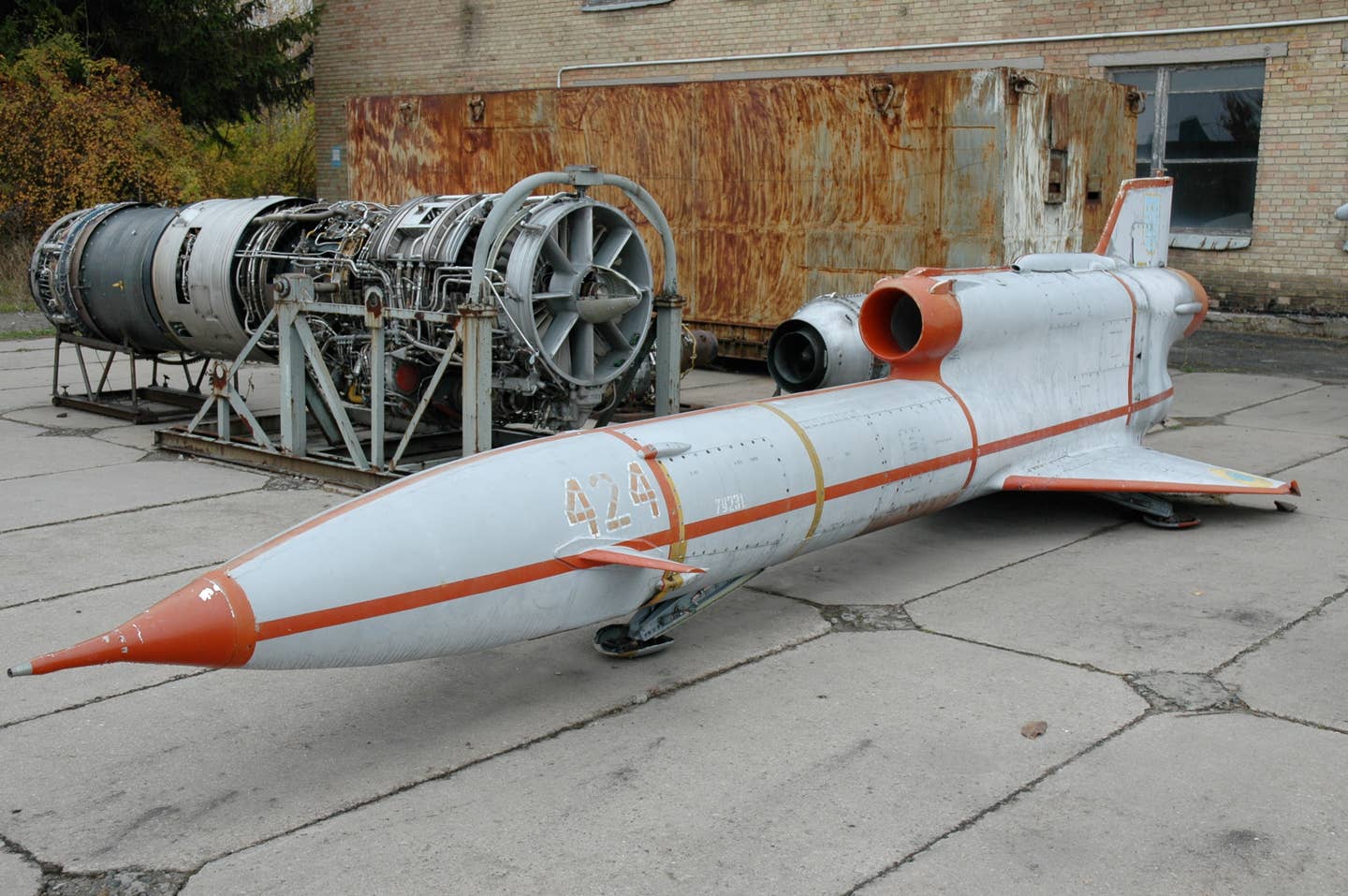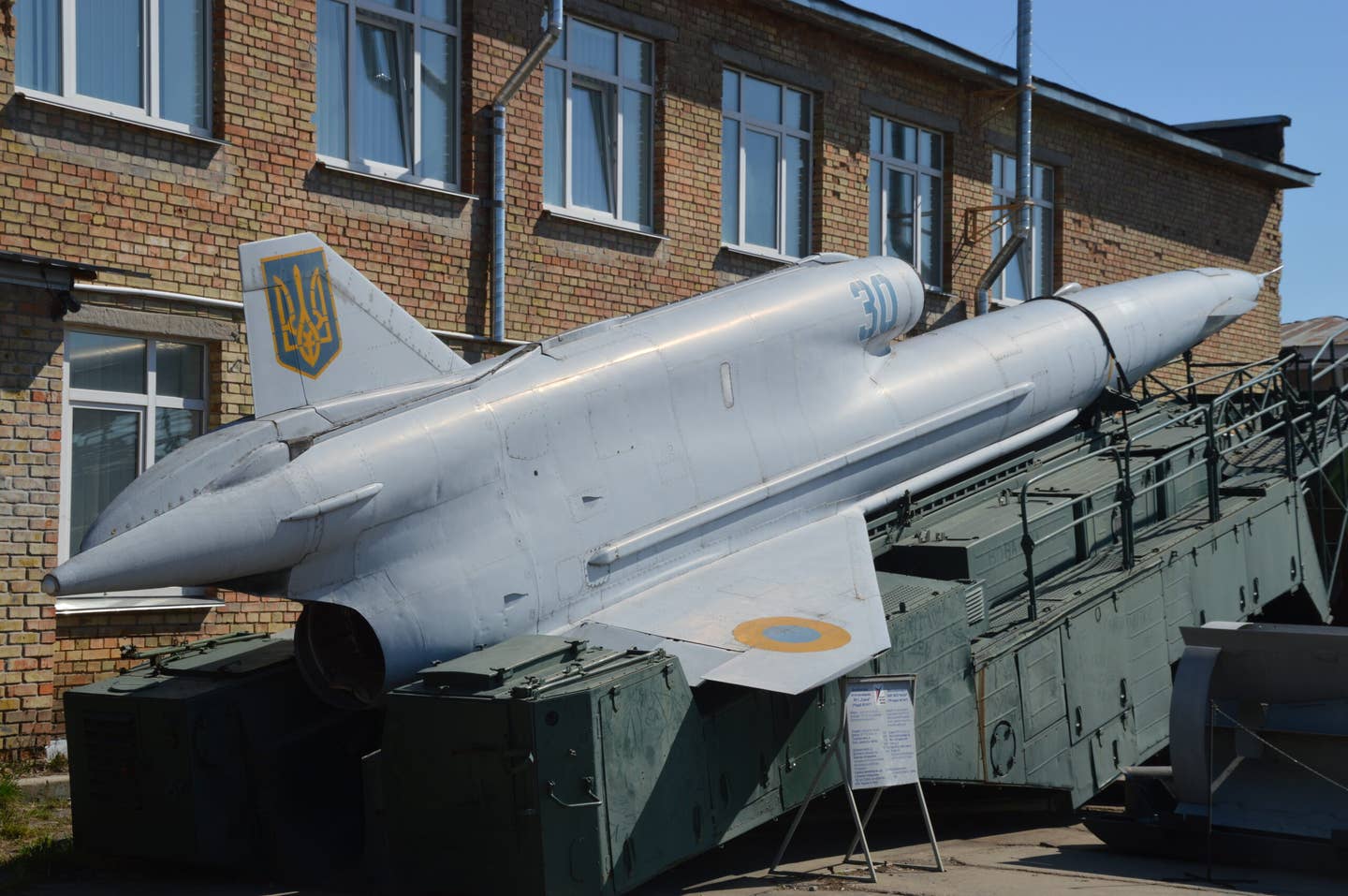A cold war era Tu-143 jet-powered drone allegedly belonging to Ukrainian armed forces was recently shot down in Kursk Oblast in western Russia.
Images of the destroyed drone showing its tail section were released by the governor of Kursk Oblast, Roman Starovoyt, saying, “I am publishing pictures of the drone we shot down last night. A Soviet-era Ukrainian Tu-141 Strizh flew into our airspace. The Investigative Committee is working where the wreckage was found.”
However, based on images of the drone, it appears to be a Tu-143 Reys misidentified by Starovoyt as Tu-141 Strizh, another Soviet-era drone larger in size.
#Russia: A Ukrainian Tu-143 Reys unmanned aircraft was shot down above #Kursk Oblast this night.
There are reports that these obsolete drones were adapted to carry explosives and now used as Ersatz-ballistic missiles with a range of more than 100km. pic.twitter.com/2TpALhGylB— ?? Ukraine Weapons Tracker (@UAWeapons) June 29, 2022
A Russian-language media report suggests that the drone was likely destroyed by the Buk anti-aircraft missile system, although no official statements have been made in this regard.
Tu-143 Reys
The Tu-143, also known as the Reys, meaning ‘voyage’ in Russian, is a reconnaissance Unmanned Aerial Vehicle (UAV) developed by the Soviet Union that is equipped with optical cameras and television and infrared sensors.
The drone has a length of 8 meters with a wingspan of 20 meters. It can fly at a maximum altitude of 1,000 meters and has a flight range of 180 kilometers.

After Russia annexed Crimea in 2014, Ukraine modernized and made these drones serviceable. The drone is rocket-launched from its trailer and follows a predefined course at transonic speed while gathering multiple types of intelligence before parachute recovery.
This is the latest example of Ukraine using its fleet of Soviet-era Tu-143 drones in the ongoing war with Russia.
In April, EurAsian Times had reported about another Ukrainian Tu-143 Reys that was destroyed in Kharkiv, which the authorities in Moscow claimed, was shot down by Russian forces.
#Ukraine: A Ukrainian Tu-143 Reys unmanned reconnaissance aircraft was shot down by the Russian forces in #Kharkiv. Such obsolete drones are believed to be used to draw out positions of enemy air defense systems. pic.twitter.com/Ix9FhOMe4N
— ?? Ukraine Weapons Tracker (@UAWeapons) April 12, 2022
Ukraine has been known to use these Soviet-era drones for various purposes such as locating enemy air defenses, as a target drone, and perhaps also as a decoy.
Was Tu-143 Targeting A Russian Airbase
The objective of the Tu-143 flying over Russian territory is unknown.
Unconfirmed reports suggest that the Tu-143 was involved in a strike against the Russian airbase at Kursk-Khalino, which houses a regiment of Su-30SM Flanker multirole fighters of the type that have been widely used by the Russian Aerospace Forces (VKS) in Ukraine.

There have been multiple unverified videos on social media showing clouds of smoke and sounds of explosions allegedly in the vicinity of the Russian airbase. These videos surfaced around the same time frame as Starovoyt’s post showing the remains of Tu-143 in Kursk.
The governor of the Kursk Oblast has shared photos of what he claims is a downed Ukrainian Tu-141 Strizh.https://t.co/mMv756n2LS https://t.co/W2tGRHCKsF pic.twitter.com/EoNwXnUw58
— Benjamin Pittet (@COUPSURE) June 29, 2022
While initially developed as a reconnaissance drone, Tu-143 could have been adapted as a one-way strike drone, but there is no definitive evidence.
VERY unconfirmed as of now, but there are now reports of explosions at #Kursk airbase.
— The Intel Crab (@IntelCrab) June 28, 2022
However, a Tu-141 Strizh, initially developed by the Soviet Union as a reconnaissance drone closely related to the Tu-143, had famously crashed in Croatia in March under mysterious circumstances with traces of explosives and components of an aerial bomb found in the impact crater.
#Ukraine: We have managed to identifiy new wreckage, and can confirm a Ukrainian drone was shot down!
However, it's not the TB-2, but the Cold war era Tupolev Tu-141 reconnaissance drone; note the landing gear/KR-17A engine.
Likely to be UA operated, but possible Russian decoy. pic.twitter.com/MOP454BWPH
— ?? Ukraine Weapons Tracker (@UAWeapons) March 8, 2022
Therefore, the Ukrainian military could have modified Tu-143 to carry out kamikaze attacks on enemy targets. The drone can be armed by removing the original reconnaissance gear and installing some warheads internally, according to Thomas Newdick, a US defense commentator.

The Tu-143 looks more like a cruise missile than a conventional drone. As stated earlier, it is a jet-powered drone that is rocket-launched from its trailer, so all that needs to be done aside from rigging it up with an explosive is to program it to end its flight at a target destination.
Can Tu-143 Replace TB2 Drones?
With a range of 180 kilometers, the Tu-143 could cover most of the Kursk Oblast if launched close to a Russian border. While not very precise, the drone could target a large facility.
An attack of this kind would be in line with increasing reports of Ukrainian activity inside the Russian territory aimed at taking the war to its invaders.
For example, in May, Ukraine struck two oil depots in Bryansk, Russia using its Turkish-made TB2 drone, infiltrating 150 kilometers inside the Russian airspace. Still, there were reports from Russian-language sources that followed the strikes on oil depots that a TB2 was shot down in Russia’s Kursk Oblast.
Of late, the hype surrounding the Ukrainian military’s Turkish-made TB2 drones has begun to come down, as per a recent EurAsian Times report that touched upon the reluctance of the Ukrainian military over the use of drones due to their vulnerability to Russian air defense systems.
Therefore, compared to a high-end system like the TB2 drone, the Soviet-era Tu-143 adapted for a Kamikaze attack could offer a cheaper alternative to Ukrainian forces.
Even if the Russian air defenses shoot it down, it would not cost Ukraine much, considering it can potentially inflict massive loss to a valuable facility like a Russian airbase housing Su-30SM Flankers, if successful.
- Contact the author at tanmaykadam700@gmail.com
- Follow EurAsian Times on Google News




